Attire is one of the most memorable aspects of any wedding. Thus, couples usually dedicate a lot of time and resources to perfect their — and their bridal party members’ — outfits. Besides garments, accessories are an essential part of any wedding attire.
One of the most well-loved wedding accessories is a boutonniere, which is a flower typically worn by men on their suits or shirts.
However, you may be wondering, “Do groomsmen need boutonnieres?” The answer is no; boutonnieres are not a must-have, though they are lovely accessories. Here are eight factors to consider to help you decide whether or not your groomsmen should wear one:
- The groomsmen’s preferences
- Any allergies to flowers
- Your wedding budget
- Your preferences
- The groomsmen’s attire
- The weather at your venue
- The wedding theme and formality
- The number of guests
The eight abovementioned factors are explained in more detail below, followed by some alternatives to boutonnieres worth choosing.
Should Groomsmen Wear Boutonnieres? Factors to Consider
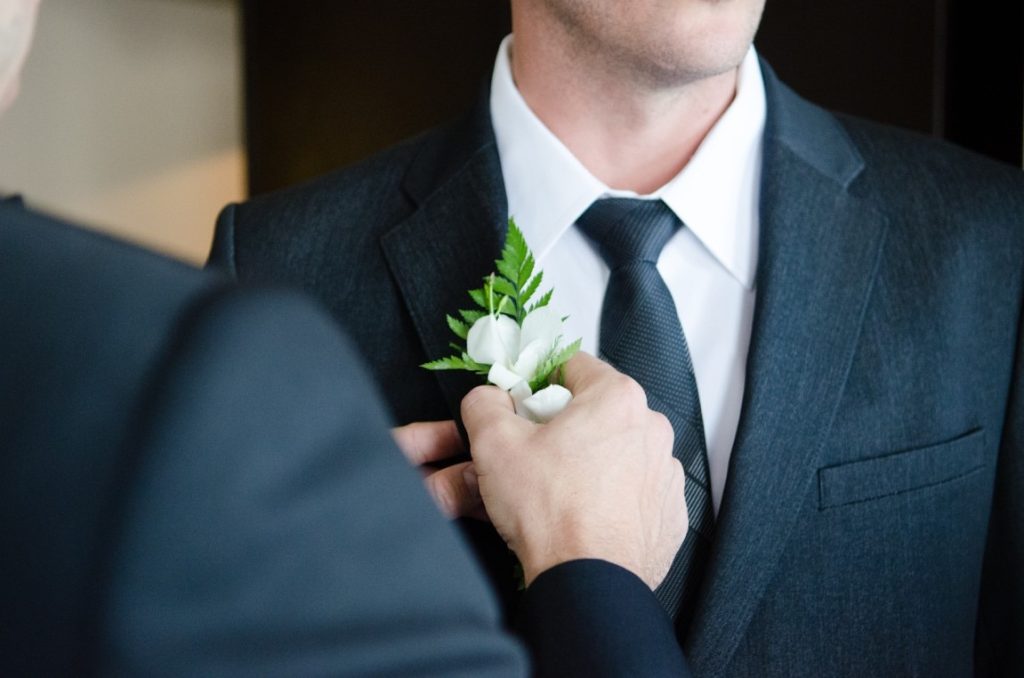
1. The Groomsmen’s Preferences
A major deciding factor for whether or not you should have boutonnieres is the wearers’ preferences. Before speaking to your wedding florist, ask your groomsmen about what they think regarding boutonnieres.
If all of them would like to wear a boutonniere, you can go ahead and purchase them. Otherwise, you should consider telling them why this accessory is significant to you. However, it is worth noting that there are countless alternatives for boutonnieres the groomsmen might be more amenable to wear.
2. Any Allergies to Flowers
Before coordinating with your wedding florist, be mindful of your wedding party’s allergens. A lot of flowers can trigger headaches and runny noses, making your special day hard to enjoy for people with allergies.
Ask your groomsmen if they have any allergies to flowers and greenery ahead of time. Your wedding florist might also be aware of flowers that commonly cause allergic reactions. Here are some varieties of flowers that you may want to avoid:
- Asters
- Baby’s breath
- Chamomile blooms
- Chrysanthemums
- Daisies
- English lavender
- Goldenrods
- Sunflowers
You might be able to find “hybrids” that have been specifically cultivated to have less pollen. For instance, a double-flowered baby’s breath has lower pollen content, making it more suitable for your floral arrangement.
As such, the best flowers to put in your floral arrangements are those with low to no pollen content. Examples include Asiatic lilies, calla lilies, daffodils, hydrangeas, orchids, and ranunculus. Ask your florist if they have these blooms in stock or if they have other recommendations.
3. Your Wedding Budget
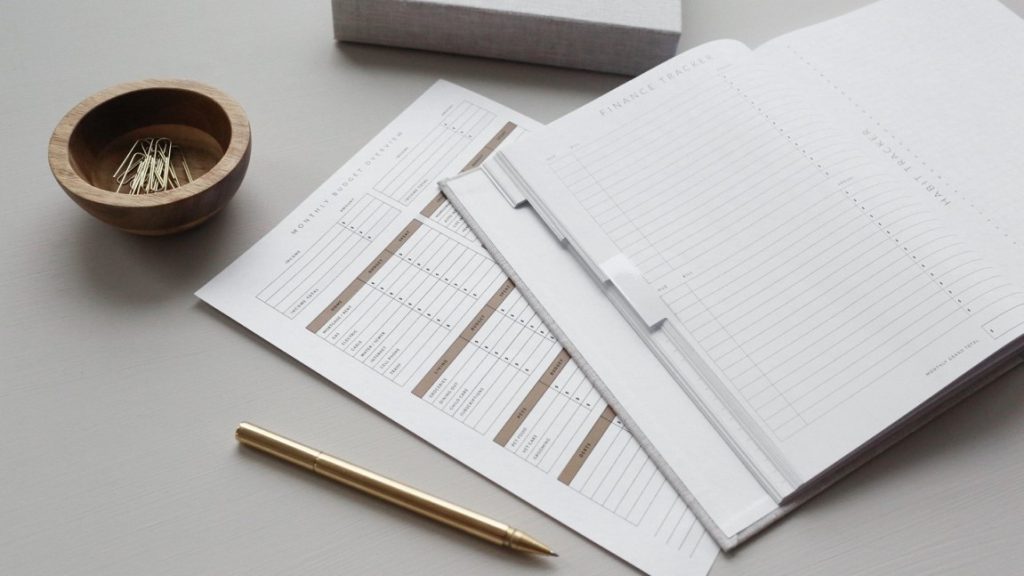
On average, wedding flowers can take up 7% to 10% of your wedding budget. This figure accounts for decor pieces for your ceremony and reception venue, bridal bouquets, and accessories like corsages and boutonnieres.
Boutonnieres can cost anywhere between $5 to $20 per piece. This price will vary depending on your chosen flowers’ rareness, freshness, and other factors. Thus, if you have five groomsmen, you could be looking at an additional $25 to $100 expense for flowers.
If you have the budget, you can splurge on as many floral arrangements and accessories as you would like. You can have arches with flowers, and petals lining the aisles, a couple of flower girls in your bridal party, and more.
However, if you need to save some money, boutonnieres might be the first thing you consider removing from your list of expenses. Do not feel guilty for doing so; there are other ways you can make your groomsmen feel like VIPs at your wedding.
4. Your Preferences
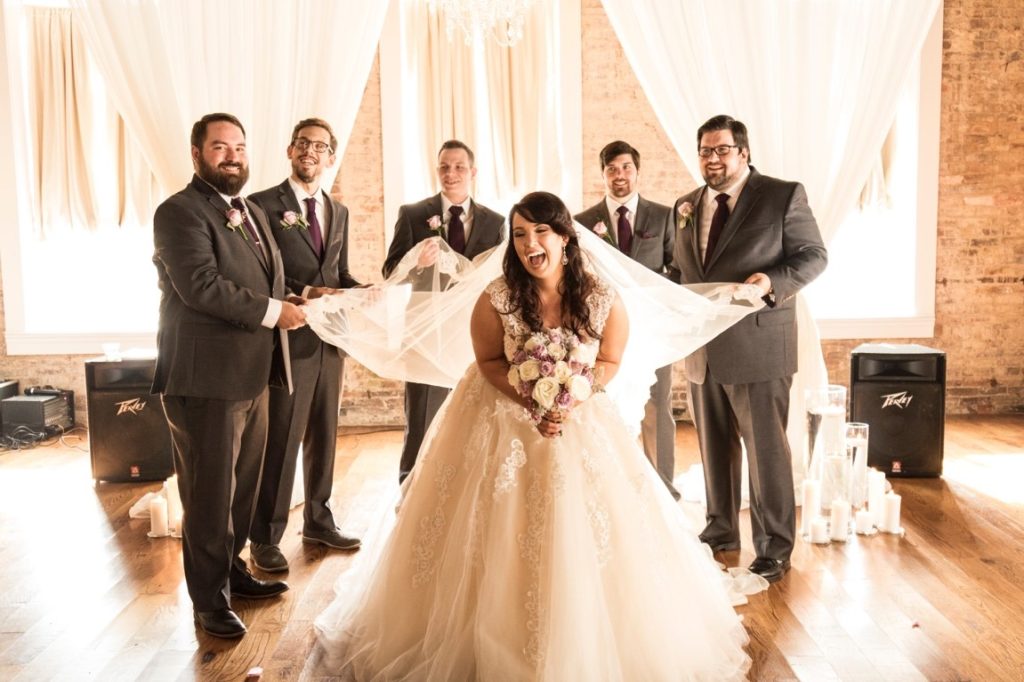
Ultimately, you are planning your wedding. Your preferences should take priority; your vision of your dream wedding should be followed as much as possible.
It can be challenging to determine whether you would like your groomsmen to wear boutonnieres or not. One way to do so is by looking at pictures of other wedding parties.
If you think it looks unbalanced if the groomsmen do not have a flower on their suit while the women have corsages or bouquets, then purchase boutonnieres for the men. Otherwise, you can disregard this accessory.
Likewise, do you and your partner want a lot of flowers at your wedding? Some couples prefer a different theme or motif, and others simply do not find floral decorations and accessories as aesthetically pleasing.
Overall, assess how you feel about this floral accessory. Perhaps the question should not be, “Do groomsmen need boutonnieres?” Instead, you should ask yourself, “Do I want my groomsmen to wear boutonnieres?”
5. The Groomsmen’s Attire
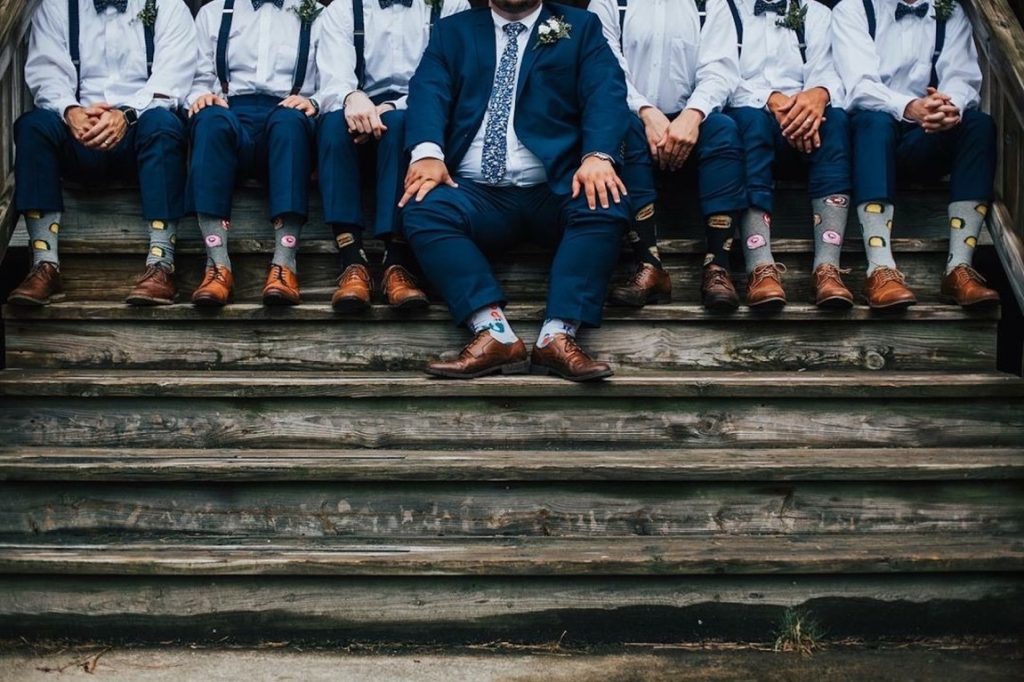
In other areas, boutonnieres are called buttonholes. This name comes from the fact that this floral accessory is designed to be positioned through a hole in a suit’s or jacket’s lapel.
Nowadays, most jackets do not have that hole on the lapel. Instead, men typically pin their boutonnieres to their dress shirts, vests, or suspenders.
It might not be ideal to fasten a boutonniere to a dress shirt, especially if the groomsmen will repurpose it for everyday wear. There will be a hole in the fabric where the pin went through, which can make for an annoying sight.
6. The Weather at Your Venue
Most boutonnieres — and other floral accessories — can last up to 12 days with proper care. However, high temperatures and dry conditions can make the flower quickly wilt.
Specifically, any temperatures above 90°F (30°C) can significantly dehydrate the flower. As a result, it will grow limp and not sit properly on the groomsmen’s bodies. You can regularly readjust it, but you may end up further damaging the accessory.
If your groomsmen wear the boutonnieres and the flowers look dead, you can always ask them to remove the accessory. After all, having no boutonniere is better than having one that is wilted.
7. The Wedding Theme and Formality
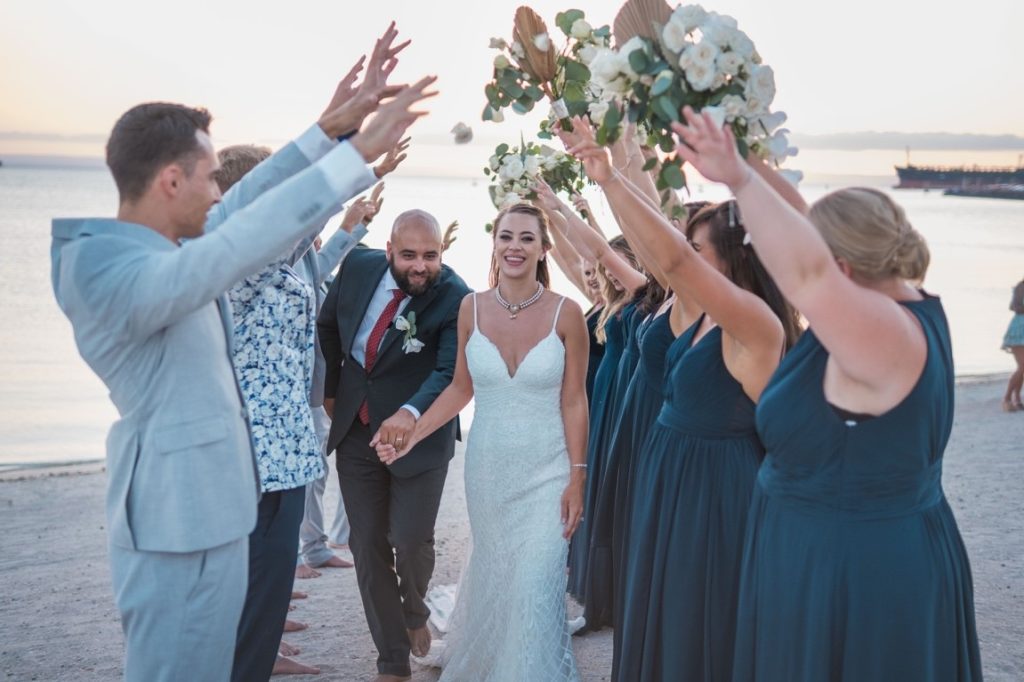
Boutonnieres are typically associated with formal events, such as weddings, ceremonies, and proms. Although wearing one is not restricted to such occasions, most people think a boutonniere signifies a high level of formality.
In some cases, boutonnieres might be inappropriate for the theme and formality of your wedding. For example, a boutonniere may be suitable for a boho wedding’s relaxed and nature-inspired motif. However, some might consider this accessory too formal or mainstream.
8. The Number of Guests
As mentioned above, one of the primary purposes of a boutonniere is to distinguish members of the bridal party, giving them a VIP status. Adding this accessory is an efficient and elegant way to achieve that objective.
However, more and more couples are opting for smaller, more intimate weddings. In some cases, they have fewer than 15 guests present. Thus, setting some people apart as “VIPs” might be unnecessary; some even choose not to have bridal parties at all.
Lovely Boutonniere Alternatives for Groomsmen
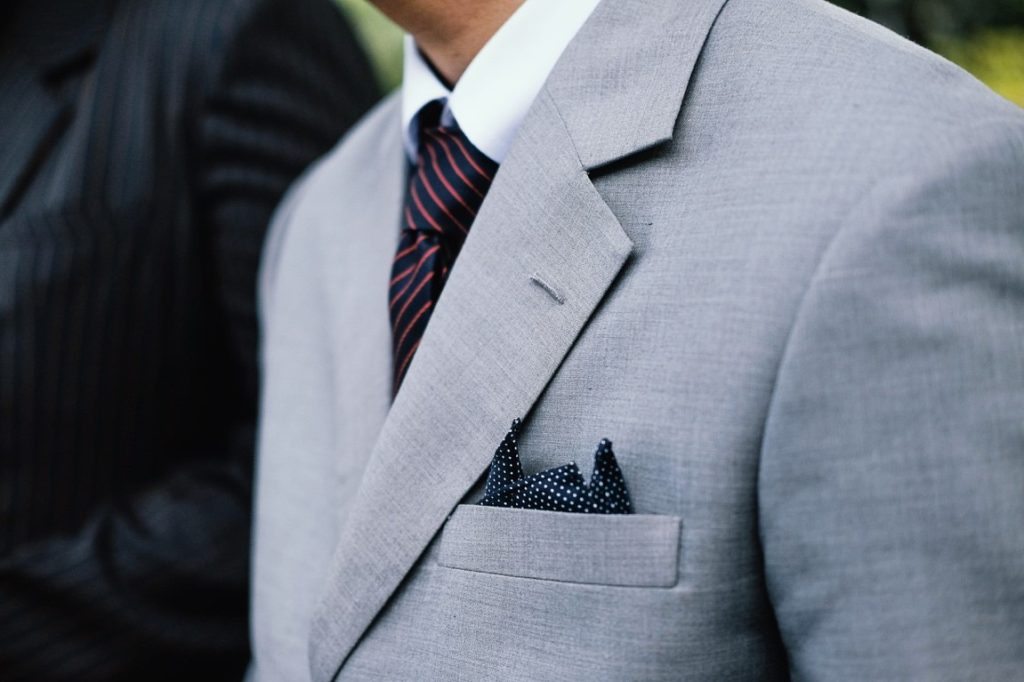
Pocket Squares
Pocket squares retain most of the characteristics of a boutonniere: they go right on the suit, they look subtle but elegant, and they can elevate an outfit to be more sophisticated. However, pocket squares are more convenient and easier to put on.
Nautical Rope Boutonniere
If you are celebrating at a beach and want a more suitable boutonniere alternative, consider opting for nautical rope. You can tie the knot and choose the design yourself, or you can buy them online for your convenience.
Neckerchief

As for a casual and chic boutonniere alternative, a neckerchief is an excellent option. Assign a color scheme and let your groomsmen be as fashionable as they want. Alternatively, you can buy a set of neckerchiefs for them, therefore also functioning as a small gift.
Paper Pinwheels
You can get small paper pinwheels that can fit in your groomsmen’s lapels. Alternatively, you can buy handheld pinwheels. Either way, this mini prop is an endearing addition to an otherwise formal and sleek outfit.
DIY Flowers
If you want the appearance of flowers but need to account for allergies, DIY flowers are a beautiful alternative. You can create — or buy — them in felt, paper, silk, and other elegant fabrics. An added benefit is that they will not break or wilt, thus doubling as keepsakes and small decor pieces.
Final Thoughts
As with most aspects of a wedding, you are not required to incorporate anything you do not want to. You get to personalize your ceremony by including the wedding traditions you want, wearing the clothes you feel gorgeous in, and inviting only the people you love.
However, some couples do not have the same freedom; they may be bound by cultural, religious, or locational rules.
In either case, boutonnieres are a minor detail you can mess around with to customize your wedding. You can choose whether or not to have your bridal party members wear them.
Ultimately, it is worth reiterating that the question should not be “Do groomsmen need boutonnieres?” but “Do I want my groomsmen to wear boutonnieres?”